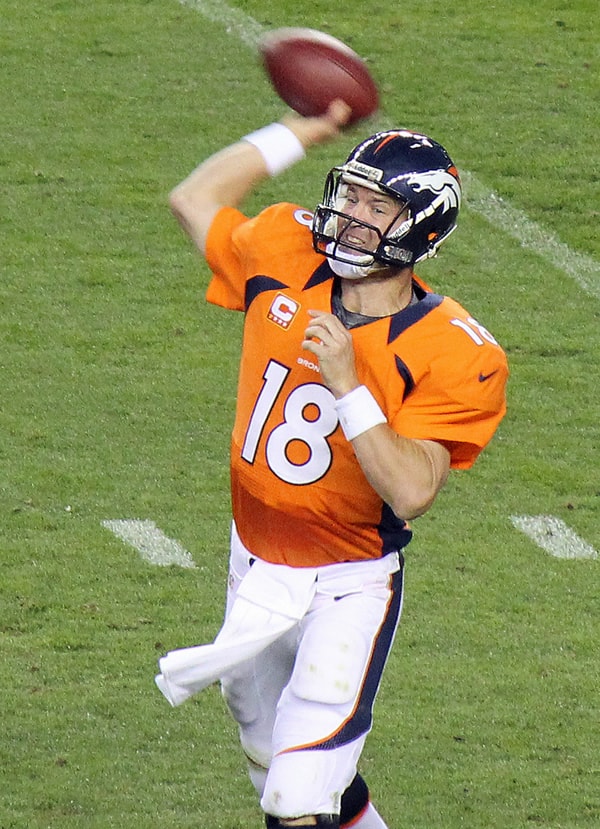6 Ways To Get Better Sports Photos
So you’ve shot sports before. Maybe you take photos at the kids’ soccer games. Maybe you’re getting more interested in photography and want to build your portfolio. You might have even considered selling your photos.
No matter where you are in the wonderful journey of sports photography, chances are you want to get better at it. Here are 6 of my tried-and-true methods for taking winning shots (pun intended).
1. Catch The Ball
Let’s face it, most sports shots without the ball are boring. The ball is the central object of almost every sport. It gives the shot perspective and emotion. If you’re showing action, you almost always have to include the ball.

If this photo had been taken a split-second earlier, it wouldn’t be nearly as interesting. Photo credit MissChatter on Flickr.
2. Fill The Frame
You usually don’t see sports shots where the subject is only a small part of the frame. Great photographers use every inch of the frame to tell the story. If your lens isn’t long enough, then crop.
Filling the frame makes the subject look close and real. If you just leave the athlete as a small part of the shot, it’ll create more separation from that athlete. Your viewers won’t be able to connect with the shot as deeply. So generally, you want to get up close and personal.

Don’t be afraid to crop to fill the frame. Photo credit Jeffrey Beall on Flickr.
On the other hand, if you isolate the subject and have them alone, a small part in a big frame, you can portray them as alone or weak. It all depends on what you want to emphasize.
And don’t be afraid to get in close – only showing part of the athlete is okay. Tight shots are great for creating drama and emotion.
3. Portray Emotion
The best sports photos are the ones that show the emotion of the competitors. Sports are emotional, and you have to capture that.
You have many options for portraying emotion. You can do this by getting up close to the players, and just looking for moments when players show the most emotion. Before the game. Right before a crucial moment. After a big win or loss. During an important play. Don’t be afraid to just show the athlete’s face.
4. Get Low
This is perhaps the easiest way to improve your sports photos. Look at the sidelines of a pro football game. Most photographers don’t stand up; they kneel and use monopods. In baseball, photographers get their own booth in the ground so they can shoot low. Getting low is key if you want engaging, captivating shots. It puts you on the level of the players. And if you’re shooting youth sports, getting low is even more crucial.
So how do you get low? Well, you can lay down on the ground. This gets uncomfortable after a while though. So does sitting on the ground. Instead, I recommend getting a monopod with a pan/tilt head. This allows you to kneel on the ground without having to hold your camera up.
Shooting from low angles is often what separates the good images from the great ones.
5. Use Aperture Priority Mode
Unless you’re shooting manual, Av mode on your camera is best for sports. Set the f-stop to the lowest setting (widest opening, lowest number). The camera will automatically set the shutter speed to the fastest setting, which is what you want for sports. You may also want to set a higher ISO, as this increases your ability to capture action.
Many photographers like to use Shutter Priority (Tv). But if you use Tv, you don’t know if you’re getting the fastest shutter speed possible. You might have it set to 1/500th but your aperture still at f/5.6. By using Av, you can ensure you have the lowest aperture and the fastest shutter speed possible.
Of course, you can always shoot in manual mode. I’ll do this if the lighting is completely even. I can set it and forget it. But the lighting usually isn’t even – there will be highlights and shadows, clouds covering up the sun. Aperture Priority adapts to these conditions. You don’t have to think about changing settings. You can simply keep shooting.
You want to freeze motion, to stop the action – this is how.
6. Get Closer
You need to be as close as possible to the action! This is especially true if you don’t have a very long lens.
One rule of thumb for minor sporting events is to assume you’re allowed nearer. If you’re not, you can apologize after they tell you to step back. Sometimes it’s better to apologize than to ask permission and be denied. But don’t try this at major sporting events – you might get kicked out!
Another way to get closer is to look professional. If you look pro enough, people automatically give you more leeway than if you just look like some guy with a camera. Wearing a photo vest instantly makes you look more professional. Use that lens hood to increase the size (and therefore pro appearance) of your lens. If you have a white lens, those always make you look super professional. Whatever you do, make sure you’re using a DSLR. You won’t look very professional if you have a point-and-shoot. If you use these few
The closer you can get, the better your chance of getting good shots.
Those are the 6 methods I use to get better photos when shooting sports. What tricks do you have? Let us know via Twitter or Facebook!
